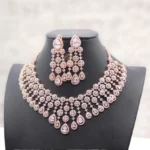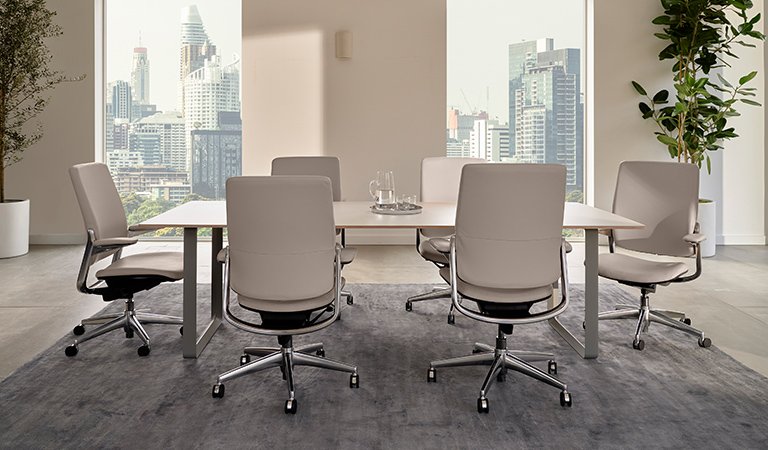In today’s evolving business landscape, collaboration isn’t just a buzzword — it’s a blueprint for productivity and innovation. At the heart of any collaborative workplace are meeting spaces that foster engagement, comfort, and focus. Key to this environment are the furniture choices we often overlook: the humble meeting room table and office meeting chairs.
Whether you’re designing a new office layout or upgrading your existing one, investing in functional, ergonomic, and stylish meeting furniture is essential to support modern work dynamics. From agile start-ups in Sydney to corporate headquarters in Melbourne, smart furniture planning can make or break team synergy.
Why Your Meeting Room Furniture Matters
Meeting rooms are no longer reserved for executive board discussions. They host brainstorming sessions, team huddles, client presentations, and cross-functional planning. As such, the furniture must reflect versatility, comfort, and professionalism.
- First impressions: For external stakeholders, your boardroom speaks volumes. An elegant meeting room table creates a perception of order and competence.
- Team performance: Comfortable and well-designed office meeting chairs ensure your staff remain focused and alert.
- Productivity boost: The right furniture layout encourages engagement and reduces fatigue.
- Efficiency gains: Streamlined layouts improve flow and reduce meeting setup times.
- Technology support: Integrated ports and connectivity options enable seamless digital collaboration.
Choosing the Right Office Meeting Chairs
Chairs designed specifically for meeting spaces must strike a balance between form and function. Unlike task chairs, they don’t require heavy ergonomic adjustments but must support posture during shorter or recurring sessions.
Look for features such as:
- Padded support for lumbar alignment.
- Stackable or mobile designs for flexible spaces.
- Durable materials that stand up to frequent use.
- Sleek aesthetics that align with your office branding.
- Ventilated backs to improve airflow during extended meetings.
Ergonomically designed office meeting chairs support better posture, improve focus in longer sessions, and present a polished look to clients and stakeholders.
Picking a Practical Meeting Room Table
Beyond just size and shape, your choice of meeting room table affects space utilisation, acoustics, and how people interact in the room.
- Round tables are ideal for inclusive discussions.
- Rectangular or boat-shaped tables suit larger boardrooms.
- Modular designs adapt to multi-purpose uses.
- Integrated tech: USB ports, HDMI access, and power modules are increasingly standard.
- Scratch-resistant finishes extend product lifespan.
Many Australian businesses are opting for meeting room table layouts that promote space-efficiency and team inclusion — whether through round, modular, or tech-integrated designs.
Trends Driving Meeting Room Furniture in Australia
Post-pandemic work patterns, hybrid schedules, and a renewed focus on wellbeing have all influenced the current wave of office fitouts. Today’s meeting spaces are smaller, more frequent, and often casual.
- Hybrid-ready rooms: With remote attendees, table design must accommodate video conferencing equipment.
- Agile layout: Chairs and tables that can move easily adapt to changing team sizes.
- Sustainability: Businesses now favour FSC-certified, recycled, or ethically sourced materials.
- Smart furniture: Height-adjustable tables and sensor-enabled chairs are emerging trends.
- Design cohesion: Meeting furniture is now more frequently aligned with open-plan themes for aesthetic continuity.
Localised Considerations: Melbourne to Brisbane
Meeting room furniture trends vary by region in Australia. For instance:
- In Melbourne, emphasis is placed on clean, minimalist Scandinavian-inspired aesthetics.
- In Sydney, design leans towards modularity to suit high-rise office layouts.
- In Brisbane, natural finishes and casual collaboration zones are increasingly popular.
- In Perth, durability and heat resistance influence material choices.
- In Adelaide, compact modular meeting pods are gaining traction in SME settings.
Choosing suppliers who understand these regional trends ensures you get furniture that aligns with local expectations and usage.
Boosting Collaboration through Layout
Furniture placement can significantly impact group dynamics. Circular seating arrangements foster equality and open dialogue. Conversely, U-shaped or square configurations support presentations and training.
- Tech integration: Ensure your tables have cable ports or power units.
- Acoustics: Table size and surface finish affect sound reflection.
- Lighting: Choose furniture that works well under various lighting schemes.
- Floor planning: Leave room for whiteboards, presentation screens, and walkways.
- Seating diversity: Mix low-profile chairs with higher-back options to cater to different comfort preferences.
Inclusive Design and Accessibility
A modern meeting space also considers accessibility for all team members and guests.
- Wheelchair clearance under tables.
- Chair width to accommodate varying body types.
- Height adjustable furniture where possible.
Inclusivity in design demonstrates your company’s commitment to equity and also complies with Australian workplace standards.
Final Tips for a Smarter Meeting Space
- Match furniture to function: A casual collaboration corner doesn’t need the same setup as a boardroom.
- Test comfort: Sit in the chair, feel the table height, check the leg space.
- Consider your brand: Colours, materials, and styles should reflect your identity.
- Plan for cleaning and maintenance: Especially relevant post-COVID.
- Ask for samples or demos: Many suppliers will offer try-before-you-buy services.
- Work with a local fitout specialist: They understand compliance, space planning, and installation logistics.
Conclusion: Invest in What Matters
Well-chosen office furniture isn’t an expense — it’s a business investment. The right office meeting chairs will increase productivity, support inclusivity, and leave a lasting impression on clients and staff alike.
As businesses adapt to more flexible and collaborative ways of working, optimising your meeting spaces can yield real-world returns — from smoother internal communication to improved external partnerships. The right mix of form, function, and flexibility in your meeting room table can future-proof your workspace for years to come.
READ ALSO: A Comprehensive Guide to Wheelchair for Kids, Special Needs Wheelchair and Circle Specialty Support











